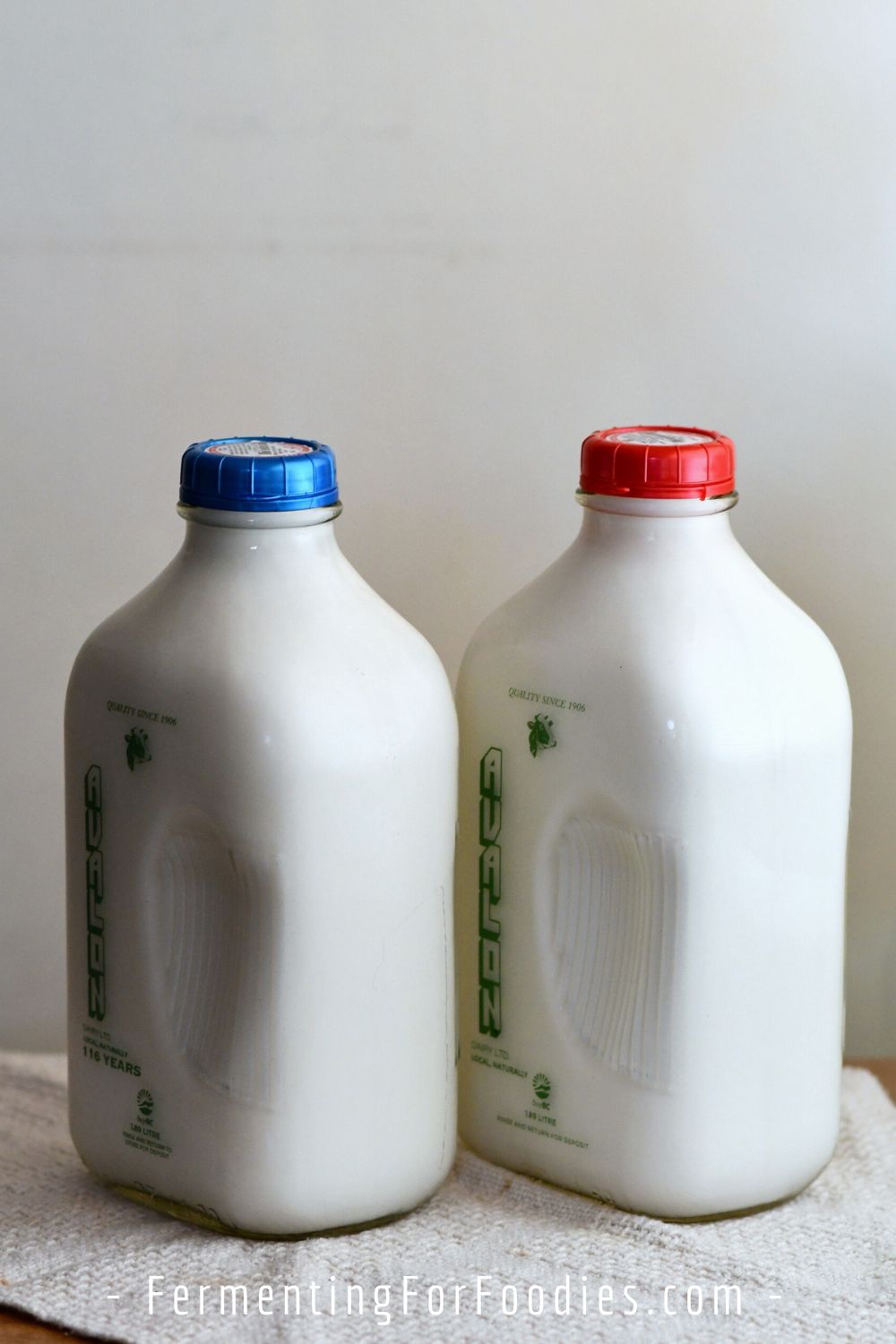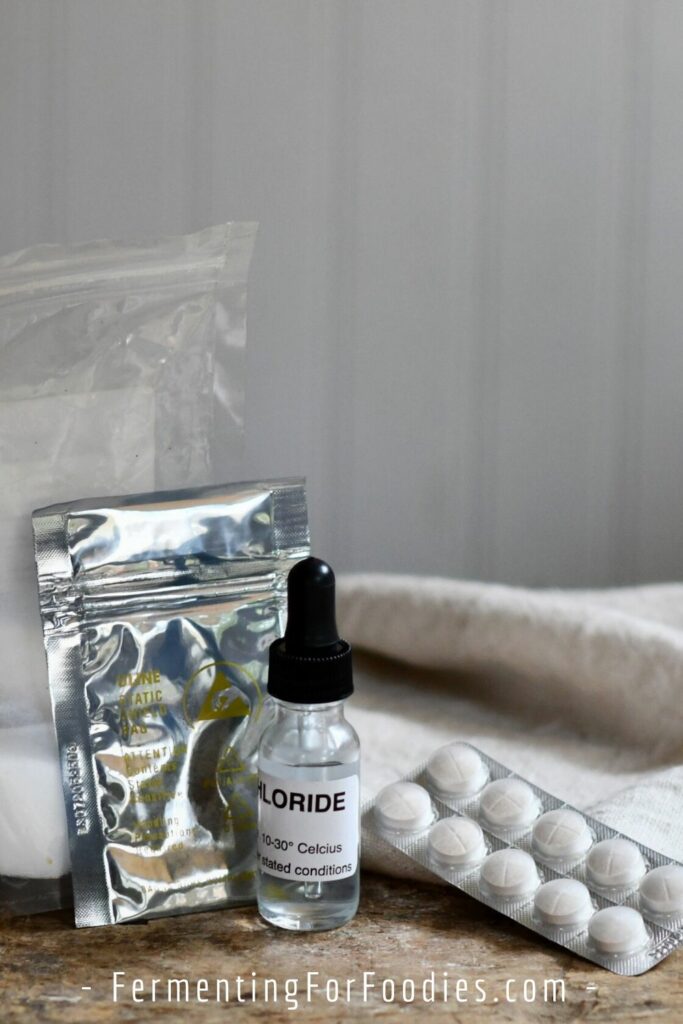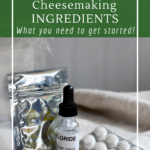Whether you are making yogurt cheese or farmhouse cheddar, it all starts with the right ingredients. Here is an in-depth look at all the ingredients needed for making homemade cheese!

This post on cheesemaking ingredients is part of a series of posts on cheesemaking. Check out Cheesemaking 101 for a step-by-step guide to everything you need to know about making cheese.
1. Milk
Milk is definitely a key part of making cheese. However, not all store-bought milk will work for making cheese.
Here’s what you need to know about milk for homemade cheese.
- UHT milk: Cheese cannot be made with long-life, UHT milk.
- Raw milk: If you start with raw milk, then you need to pasteurize it in order to create a specific type of cheese. A lot of the flavor of cheese comes from specific culture strains. Otherwise, you can make cheese without adding any culture at all, as raw milk naturally contains a mesophilic culture.
- Non-homogenized milk is the best option for cheesemaking. Homogenization breaks down milk fat to stop the cream from separating. However, it affects the yield of homemade cheese. I find about a 12% reduction in the quantity of cheese per gallon of milk with homogenized milk.
- Goat and sheep milk are naturally homogenized. It’s just the way it comes out of the animal, so be sure to add calcium chloride to goat and sheep milk.

2. Culture
Each type of cheese has its own particular culture. So if you want to make a certain type of cheese (cheddar, brie, provolone, etc.) you need to use the proper culture. Luckily, every store-bought cheese cultures I’ve tried was very vigorous and healthy.
Cultures can be divided into mesophilic or thermophilic cultures.
- Mesophilic cultures prefer temperatures around 72 F (22 C). They don’t require heating during the inoculation stage of cheesemaking. Mesophilic cultures are used for the majority of cheeses (from cheddar to brie).
- Thermophilic cultures prefer temperatures around 110 F (43 C). They need to be kept warm during inoculation. Generally, Italian cheeses (mozzarella, provolone, and Parmesan) use thermophilic cultures.
- Milk kefir can be used as a mesophilic culture for simple, fresh cheeses. It is a good replacement for the natural bacterial profile found in raw milk. Use it for cheeses like feta, halloumi, and cottage cheese. Because kefir also contains a yeast culture, it is not ideal for hard cheeses.
3. Rennet
Rennet is what causes your milk to coagulate and form curds. Traditionally made from the enzymes in a calf’s stomach, there are now many vegetarian options.
4. Salt
Cheese salt is a coarse, non-iodized salt that is specifically used for cheese. However, you can use any non-iodized salt for curing cheese. I typically use regular sea salt.
5. Calcium Chloride
Calcium chloride is added to homogenized milk to increase the calcium content. It is necessary if you’re using homogenized store-bought milk, sheep milk, or goat milk. However, it is not necessary with raw and/or non-homogenized milk.
- Buy liquid, food-grade calcium chloride.
- Use 1/4 tsp of calcium chloride mixed into 1/4 cup of chlorine-free water for every 4 liters (1 gallon) of milk.
- Add the calcium chloride at the same time as the rennet to improve the curding of homogenized milk.

Hiya
Do you need Calcium chloride if the milk is raw?
Many thanks
Nope! Calcium chloride is only necessary for homogenized cow milk. However, goat milk and sheep milk are naturally homogenized and will need calcium chloride even if they are raw. Cheers!
Hello Emily, if the milk is bought raw, and pasteurized at 72°c, do we need to add calcium chloride in that case ?
Sorry just added my email to get notified of your reply
Hi Rany, there’s no need to add calcium chloride. I’m assuming it’s not homogenized? It needs to be added to homogenized milk. Enjoy!